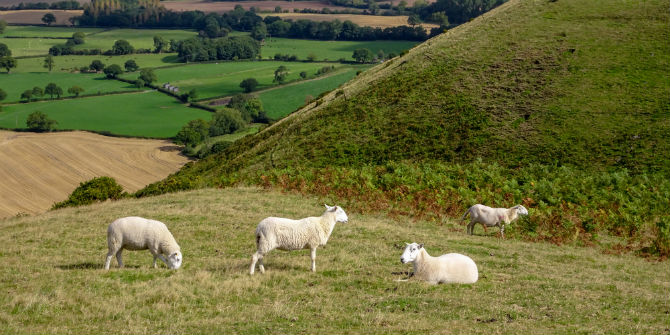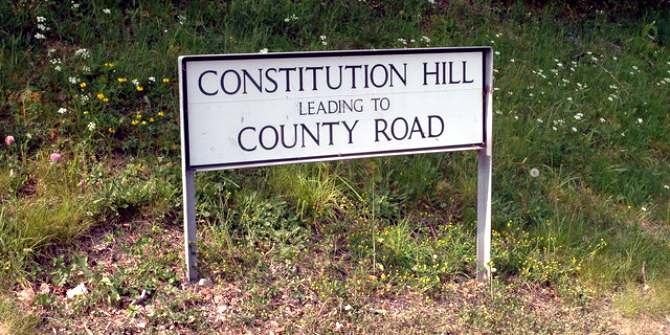 Were we starting from a place where nature was fully protected and thriving, dismantling the structures and support provided by the EU would be a more worrying prospect, writes Mike Townsend (Woodland Trust). But while the EU provides many environmental benefits the state of the natural environment remains woeful. We must seize this opportunity to reframe nature conservation.
Were we starting from a place where nature was fully protected and thriving, dismantling the structures and support provided by the EU would be a more worrying prospect, writes Mike Townsend (Woodland Trust). But while the EU provides many environmental benefits the state of the natural environment remains woeful. We must seize this opportunity to reframe nature conservation.
The UK’s decision to leave the European Union will have significant repercussions for our land use. With the uncertainty comes the threat that changes will be accompanied by a weakening of protection for nature and a withdrawal of investment in conservation and restoration of the natural world. However, there are also opportunities. In particular, the end of the Common Agricultural Policy (CAP) promises the opportunity to reframe land use to protect nature and deliver genuine public benefits, something that Environment Secretary Michael Gove has been enthusiastic to champion.
A new era for the natural environment?

If the rhetoric of the Government’s 25-year plan to improve the environment is taken at face value, we are headed into an era in which the natural environment is not only maintained but enhanced and improved. The plan boldly promises to deliver clean air, clean and plentiful water, thriving plants and wildlife, sustainable and efficient use of natural resources, and enhanced beauty, heritage and engagement with the natural environment.
The clock is ticking and the exact nature of our departure from the EU remains unclear, possibly even uncertain. The impacts on nature conservation depend on a number of factors which remain undetermined, including the chosen exit model and the trading relationship with the EU and other nations, the treatment of enacted UK legislation based on EU directives, treatment of agricultural and rural payments following the loss of the CAP, and the general state of the economy.
Options for exit
The Government’s Brexit sub-committee is in discussions about the exact nature of a customs agreement with the EU. In addition to leaving the CAP, under any scenario the UK will fall out of a range of EU directives relating to the natural environment, including the Habitats Directive, Birds Directive and the Floods Directive. The UK would of course remain party to international agreements such as rules of the General Agreement on Tariffs and Trade (GATT), and international commitments under the Convention on Biological Diversity, the United Nations Framework on Climate Change, UN Sustainable Development Goals 2030, Bonn Convention 1979 on the conservation of migratory species of wild animals, and the Bern Convention 1979 on the Conservation of European Wildlife and Natural Habitats. Not everything disappears with exit from the EU.
Enduring problems
The protection of species, habitats and sites provided by the Birds and Habitats Directives is threatened by leaving the EU. Sites under Natura 2000 (Special Areas of Conservation (SACs) and Special Protection Areas (SPAs)) will no longer meet the definition of European Sites and will in effect disappear as a designation. However, all Natura sites are also Emerald sites under the Bern Convention, which will persist, and this may be a mechanism by which protection could be maintained. All SACs and SPAs are also Sites of Special Scientific Interest (SSSIs) and so will continue to be covered by UK legislation.
Protection for nature conservation through the planning system and in relation to infrastructure development is not affected by leaving the EU, so while the familiar problems persist, they are not changed for better or worse. While alterations to trading relationships may affect movement of plant material, leaving the EU will not have any additional impact on pests and pathogens or invasive species entering the UK unless we improve national biosecurity. Measures to improve biosecurity for a range of potential disease and pest pathways will remain critical under any future trading arrangement with both Europe and the rest of the world.
Failure of the CAP
Across Europe, the CAP was intended to maintain farmers on the land and retain rural communities through direct support for production and wider support for rural development. Nonetheless, in most of Europe the CAP has failed to halt rural depopulation and large areas have seen land ‘abandonment’. In the UK, while rural populations have not been significantly depleted in absolute terms, there has been a marked shift in demographics. The average age of farmers has increased, particularly in less favoured areas such as the uplands.
Those farmers and farms outside the most productive lowland areas are reliant on farm subsidies. In most upland areas farm subsidies represent over half of farm income and farming businesses would be unlikely to survive in their current form without continued direct support.
It is apparent that agri-environment and other payments under the CAP have had limited impact on stemming the loss of biodiversity. Overall they have often supported management practices that work against the interest of wildlife and the environment. There has been growing debate around the need for land use to support public benefits. This includes discussion of natural flood risk management, rewilding, increased woodland cover, recreational benefits, and carbon storage. Reports to Government from the Natural Capital Committee have highlighted the value of other uses for less favourable areas of land and the importance of the natural environment to the national economy. Discussion of payment for ecosystem services has suggested other approaches to paying for land use change and the benefits it might bring.
In general the loss of the CAP, whilst creating uncertainty, also creates the greatest possibilities to expand management for nature conservation and for a more imaginative and strategic approach to land use.
Repurposing land use
In most cases, current direct farm support generates little demonstrable public benefit and can produce disbenefits. There is an opportunity to move away from direct payments based on area farmed, in favour of payments which clearly reflect the delivery of a range of public benefits. In agriculturally marginal areas, including most of the uplands, payments could be used to overcome market barriers for an increase in the contribution of land to biodiversity, access, water and carbon benefits.
This might include an expansion in native tree and woodland cover and creation and restoration of open habitats. It could also include adoption of rewilding or greater use of natural processes in marginally productive areas as a cost effective form of land management.
In the longer term, some of these changes may result in income streams which make them largely or wholly self-funding. In other cases continued public funding could nonetheless provide measurable overall public benefit. In more productive lowland areas, food production is likely to remain a priority and agri-environment payments should be targeted to ensure that wildlife can thrive even within intensively farmed landscapes. This is critical both to mitigate environmental impacts of agriculture and to support productive farming through the provision of shelter and shade, support for pollination services, reduction of soil erosion and so on.
Both less productive land repurposed around wider public benefits and productive agricultural land managed sustainably for food production should be part of a wider strategic view of land use. This view should ensure that those goods and services that require consideration at a landscape scale are fully recognised. This includes making the whole landscape amenable to the movement of species in order for them to survive and adapt to climate change and other environmental pressures.
Seize the day
Were we starting from a place where nature was fully protected and thriving, dismantling the structures and support provided by the EU would be a more worrying prospect. But while the EU provides many environmental benefits, particularly at a pan-European level, the state of the natural environment remains woeful. We are faced with the reality of exit from the EU, and notwithstanding the need to avoid losing ground on protection, we should focus on seizing opportunity from the necessity of change.
This post represents the views of the author and not those of the Brexit blog, nor the LSE. It first appeared in the Summer 2018 issue of Wood Wise.
Mike Townsend OBE is principal conservation advisor for the Woodland Trust.







1 Comments